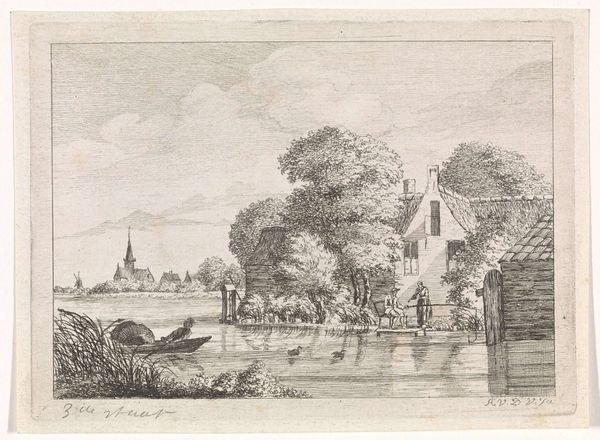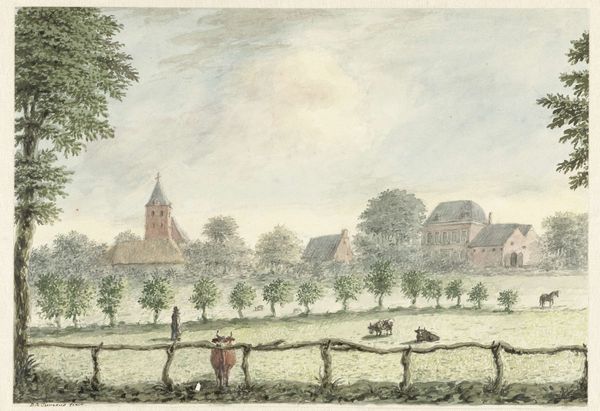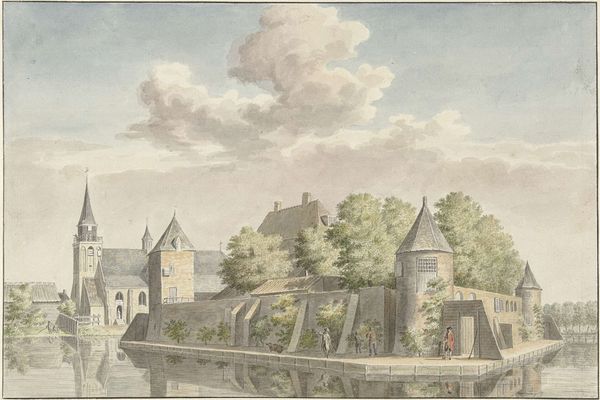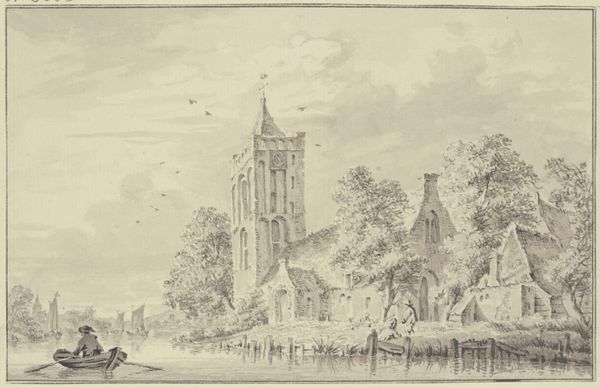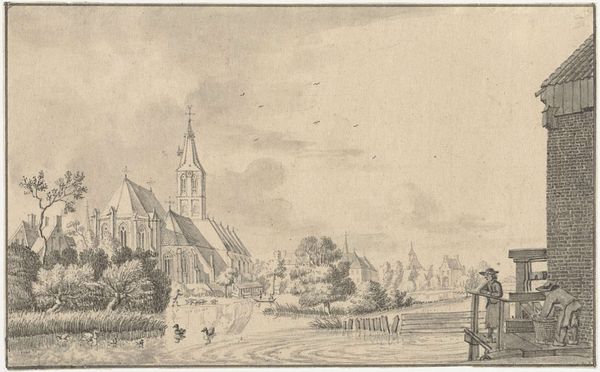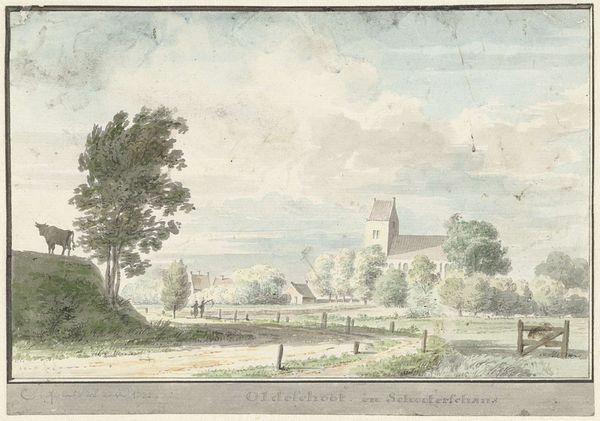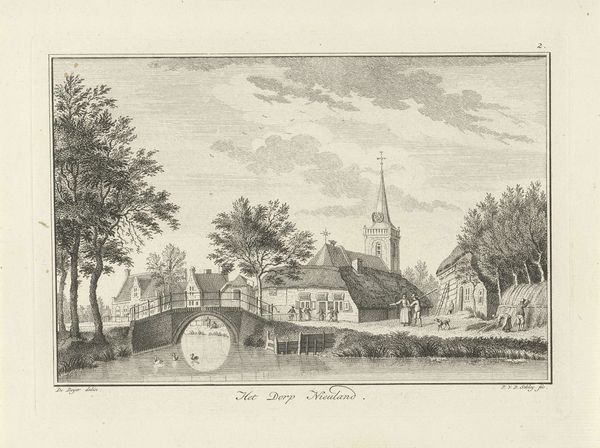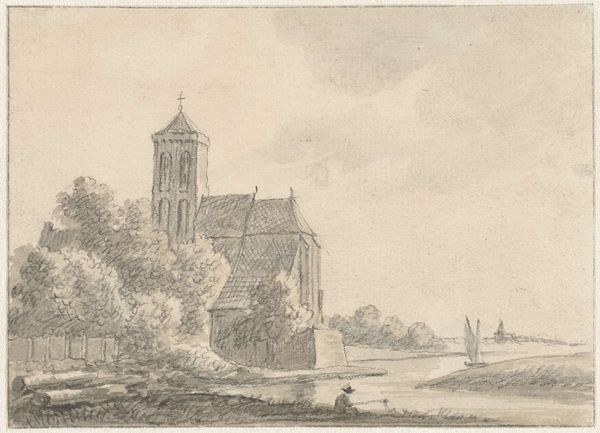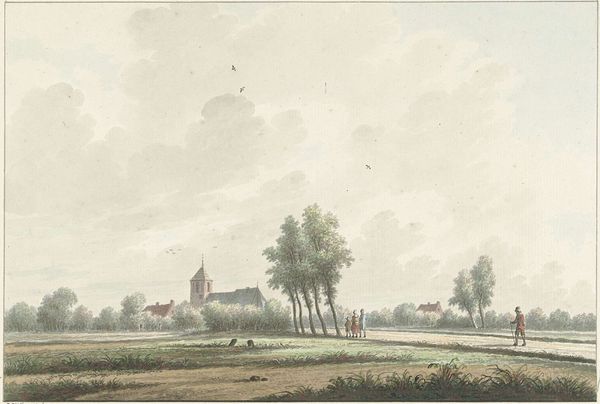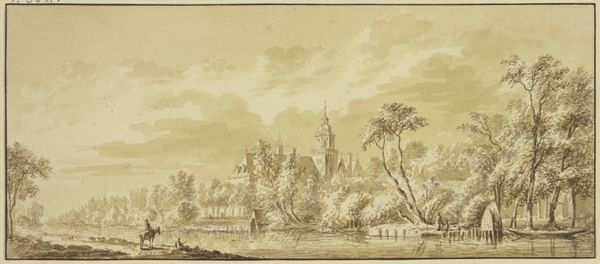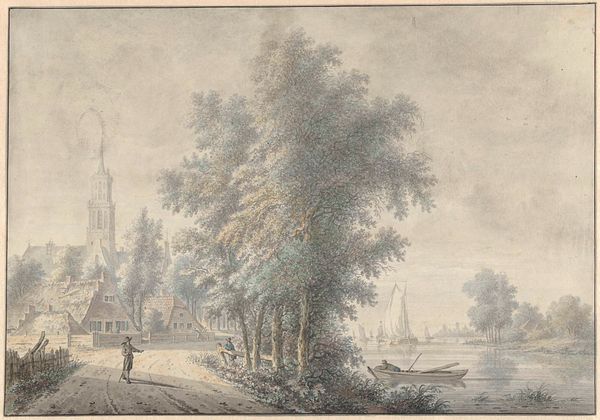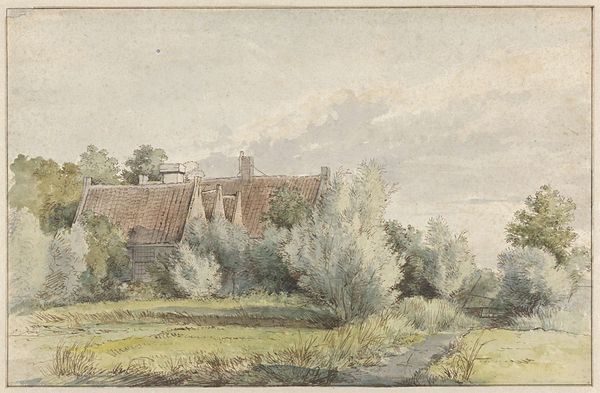
Gezicht op Asperen met de stadsmuren en de kerktoren 1745 - 1795
0:00
0:00
jacobusversteegen
Rijksmuseum
plein-air, watercolor
#
dutch-golden-age
#
plein-air
#
landscape
#
watercolor
#
cityscape
#
watercolour illustration
#
watercolor
Dimensions: height 173 mm, width 245 mm
Copyright: Rijks Museum: Open Domain
Curator: Looking at this watercolor illustration, it strikes me as both serene and somewhat melancholy. The muted tones and wide sky contribute to a contemplative atmosphere. What are your initial thoughts? Editor: Well, Jacobus Versteegen completed this watercolor somewhere between 1745 and 1795. The artwork, currently housed in the Rijksmuseum, offers a cityscape capturing the views of Asperen, emphasizing the town walls and the towering church. From a historical standpoint, the painting serves as documentation. What was life like in Asperen then, for those who lived within and beyond these walls? Curator: Exactly! We can think about Asperen as a symbol, not just as a place, but also in what or who that place protected, who that place excluded. A watercolor can offer perspective, as can a fence line or border—in this instance, both function similarly. The choice of watercolor as a medium interests me as well; its delicacy lends a certain transience. I wonder if that’s a conscious commentary on the ephemerality of power and place. Editor: Possibly. But, you know, the Dutch Golden Age valued realism. While this piece has that airy quality unique to watercolors, artists strove to capture details about how people related to public spaces, including those imposed power structures. The presence of figures walking and sailing reminds us of commerce. Did their freedom extend beyond economic engagement with those power structures, such as access to political decision making? Or were they merely players in a performance defined by societal hierarchies? Curator: I’d push back a little. Isn’t it equally valuable to analyze the emotional and experiential resonance the work generates? We can certainly see this vista as a factual representation, and then we can delve deeper into how this portrayal might interact with discussions on community and belonging. Perhaps thinking about this piece through the lenses of art history *and* social theory gets us closest to the lived experience it depicts. Editor: Point taken. It certainly reflects the evolving status of the Dutch Republic's landscape painting traditions during the mid-to-late 18th century and serves as an important touchstone of its time. The layering of those traditions provides the image with texture that invites reflection about its era and ours. Curator: So true! Thinking about who creates and owns landscape imagery really adds another compelling dimension, doesn't it? Editor: Agreed, and considering it in its original historical and social context as well is a way to honor this watercolor and continue conversations sparked centuries ago.
Comments
No comments
Be the first to comment and join the conversation on the ultimate creative platform.
